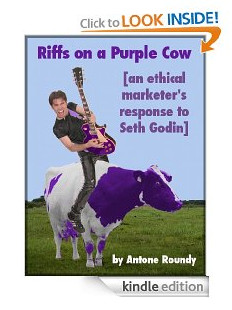When you purchase through links on our site, we may earn an affiliate commission (details)
Designing Content to Go Viral
by Antone Roundy | 1 Comment | Premium Content, Viral
Yesterday, I wrote about some research from the 1960's into the forces that drive word of mouth advertising. The article was focused primarily on what inspires people to talk about brands and products. Today, let's focus on how to make content go viral.
As I said yesterday:
...the #1 key for viral marketing success is to create products so exceptional, that people can't help but talk about them... it's not so much about the product as about the experience of using the product.
When it comes to content, that means that it's not just about generating great information. You also have to make the experience of consuming it remarkable.
Perhaps that's one reason why telling stories is so powerful. Stories teach in a way that's more than just words and ideas. They engage the senses by creating visual imagery, and in the most powerful cases, evoking the other senses too -- touch, taste, smell, etc.Do you tell enough stories in your content? Do you fill them with sensory words? Do you do enough to help your readers experience what the characters in the story experienced? (I'm sure I don't -- something to work on there).
The #2 key [is] enhancing the stature of the user...
With brands and products, that can be done by making products that are a status symbol. Yesterday, I gave the example of Apple products.
But how can content enhance the status of your customers?
If you make it exclusive -- only available behind a paywall or some other barrier -- then those who have access become part of an "insider" group. But doesn't that prevent it from becoming viral?Maybe. Maybe not.
What if you gave early access or complete access only to your inner circle? What if you allowed them to copy and reuse it -- "with Joe's permission, I'm reprinting this article that he sent only to members of his $100/month mentoring group." (By the way, if you write a Riff on this post, feel free to use quotes from the premium sections :-).
Even if you don't make it exclusive, we live in a society where the person who shares good content gains status as a curator of value.
The third (around 20%) is other-involvement. The speaker wants to reach out and help to express neighborliness, caring, and friendship.
Making your content useful, so that sharing it becomes an act of kindness, is a good beginning. But there's more to it than that.
Actually talking about the fact that you want to help the reader by sharing the information with them, or telling stories of how it enhanced someone else's life, will bring those thoughts to the forefront, inspiring your readers to share it for that reason themselves.Also, if the content itself -- the stories you tell, for example -- talks about positive social interaction, that can help evoke similar feelings and actions in your readers.
...humorous or informative messages were the least powerful of the four motivations that the study found.
Humor and information value may have been the least powerful of the four motives named. But they still made the list. And with content even more than with brands and products, the humor or the information value is the essence of what you're offering.
Just don't stick to humor or information value exclusively without mixing in a healthy dose of the other factors.





July 29th, 2012 at 3:18 pm
I have always wondered if there were ways to actually make your content better suited to go viral. Of course, I always try to produce something that is quality and very useful to my audience. But, actually having something that goes viral, really viral, has so far eluded me.
Antoine provides a lot to think about here in terms of actually trying to design content that is able to go viral. The key element that caught my attention is to really focus on the experience someone has when using your product. It is ultimately not so much about the product, but what it actually doe for people. I think this also means that your really should not so much create 'products,' but create solutions to problems.
The solutions are what capture the attention and interest of others. If you had something that could offer incredible results, it is always better to focus on those results than the features of the product. This is kind of like selling the steak and not the sizzle.